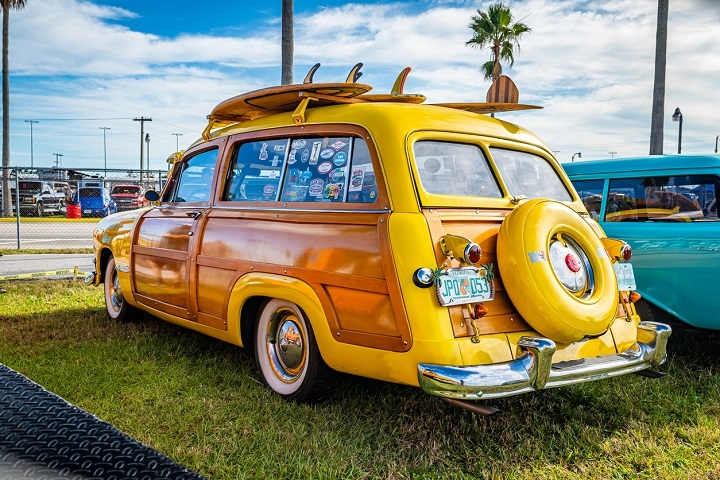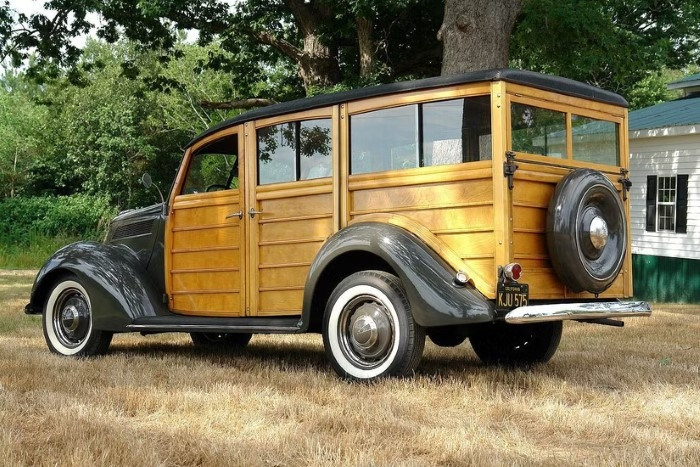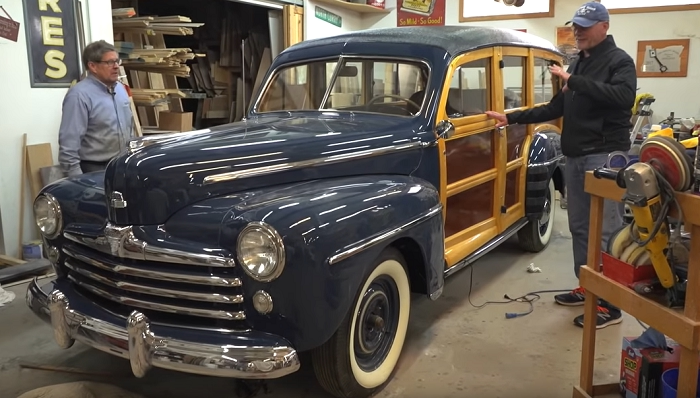The automobile world consists of steel, chrome, and glass. There is one, though, that has a different type of charm to it. The woody car. It’s more than just a way to get from here to there. It’s nostalgia. It’s history. It’s design where wood and metal are combined so beautifully that still turns heads today.
Woody cars were originally pragmatics. They became fashion symbols. They became toys and collectibles. Today, “woody car” means many things to many people. To some, it is the retro wood-paneled station wagon. To others, it is the small wooden toy automobile for children. Both descriptions are warm, handmade, and enduring.
This blog is going to take you through the woody car story. From culture to history. From design to toys. From functionality to emotional bond.
What Is a Woody Car?
The Classic Station Wagon
The woody car typically refers to the vintage station wagons of the 1930s to 1950s. Their bodies featured real wood on doors and panels. This gave them a country charm which no modern SUV can emulate.
The Wooden Toy Car
For children, the woody car is a wooden-carved toy. Basic wheels. Blunt edges. Bright color or plain natural finish. These toys are well-liked for being simplistic and safe.
The Symbol
Toy-sized or full-sized, a woody car symbolizes craftsmanship, tradition, and warmth. It bridges generations.
The History of Woody Cars
Early Beginnings
In the 1910s and 1920s, station wagons needed working bodies. Wood was cheap and easy to work with. Panels and frames were formed by carpenters.
These were the first woody cars.
The Golden Era
Woody cars were common by the 1930s. Ford, Chrysler, Chevrolet, and Buick each made wood-paneled wagons. They became symbols of family road trips, outdoor recreation, and summer vacations.
Decline
By the 1950s, the new material was steel. Wood was expensive and high-maintenance. But the woody car image had already been established.
Toy Traditions
Wood toy cars also became popular around the same time. Parents liked wood better than fragile plastics. Carvers carved and painted cars that lasted generations.
Design of the Woody Car
Real Cars
- Wood side panels
- Steel chassis
- Chrome details
- Roomy interiors for families
Toys
- Smooth wooden blocks with wheels
- Painted or natural finish
- Some handmade, some mass-produced
- Designed to be safe and durable
The Style
The look is a blend of rough-hewn style and sophistication. No two woody cars are the same. Every piece of wood adds unique grain and texture.
Why Woody Cars Are So Popular
Nostalgia
The woody car takes us back to simpler days. Road trips. Beaches. Family vacations.
Craftsmanship
Every panel took hand labor. Nowadays, such care seems in short supply.
Pop Culture
Films, surf culture, and music videos all retain the woody car. It is not a car. It is an icon.
Toys and Childhood
Wooden toy cars make parents think of when they were kids. They offer kids a safe, uncomplicated, creative play.
Woody Car in Popular Culture
Surf Culture
Surfers made woody wagons popular during the 1960s. Boards are easily accommodated on top. The cars became a symbol of freedom and beach life.
Movies and TV
Woody cars appear in films as symbols of nostalgia. They symbolize the open road. They symbolize family.
Collectors
Woody wagon owners hold classic cars close to their hearts. Restored models bring premium prices.
Woody Car Toys
For Toddlers
Big wooden cars with soft edges. Easy to grasp. Painted bright colors.
For Older Kids
More realistic cars. Perhaps with pull-back action or magnetic parts.
For Collectors
Handcrafted wooden models. High level of detail. Display pieces rather than toys.
Educational Benefits
- Develops motor skills
- Fosters imagination
- Safer than plastic with small components
- Durable and eco-friendly
How to Care for a Woody Car
For Real Cars
- Maintain wood panels periodically with varnish or oil
- Prevent water damage
- Keep indoors to guard against sun damage
- Maintain steel and chrome like other vehicles
For Toys
- Clean with damp cloth
- Do not soak in water
- Apply natural oils on wooden finish
- Keep away from heat to prevent cracks
Buying a Woody Car
Classic Car Buyers
- Check authenticity of wood panels
- Check for water damage or rot
- Expect higher maintenance bills
- Join woody car clubs for guidance
Toy Buyers
- Choose non-toxic paint
- Look for smooth finishes
- Buy from well-known makers
- Choose handmade for unique character
The Emotional Side of Woody Cars
A woody car is never just a car. It is history. For families, it’s memories of vacations. For surfers, it’s memories of waves. For children, it’s memories of playtime. For collectors, it’s memories of craftsmanship.
The woody car is not about speed or luxury. It is about warmth. It is about connection.
The Future of Woody Cars
Collectors
There is more and more interest in old woody cars. Restored cars appear at shows. They are the headliners at auctions.
Toys
Wood toy cars are in greater demand again. Parents seek out eco-friendly options. Handmade toys are cherished.
Symbol
Even though new automobiles no longer have actual wood, the woody car as a symbol endures. It will remain in design, art, and culture.
Pros and Cons of Woody Cars
Pros
- Nostalgic look
- Unique craftsmanship
- Durable toy models
- Culturally significant to a high degree
Cons
- Real cars need excessive maintenance
- Vintage models are expensive
- Toys may lose out on new technology
Real Stories of Woody Cars
Family Vacations
Families of the 1940s and 50s remember squeezing into woody wagons. Road trips to the coast. Memories associated with the scent of wood and leather.
Surfer Vans
California surfers still restore woody cars. They leave them parked at the beach. They show them off at festivals.
Childhood Play
Parents preserve their childhood wooden toy cars. They pass them on to their children. They become reminders of love and continuity.
FAQs
What is a woody car?
It is applied to refer to vintage wood-paneled station wagons as well as wooden play cars for children.
Why are woody cars symbolic?
They symbolize surf culture, summer breaks, and craftsmanship of a bygone era.
Are woody cars made today?
New cars do not use real wood panels, but original ones are restored, and toy ones are prevalent.
Are wooden toy cars safe?
Yes. Most use non-toxic paint and smooth edges, so they are safe for kids.
Why do collectors love woody cars?
They represent nostalgia, unique styling, and cultural heritage.
The woody car is neither a car nor a toy. It is history. It is styling. It is a reflection of the handiwork of humankind. From real wagons of the 1930s to children’s toys today, the woody car radiates charm generation after generation.
It will not growl like a muscle car, nor glisten like a luxury SUV. But the woody car has tales. It has character. And that is why it never ages.




